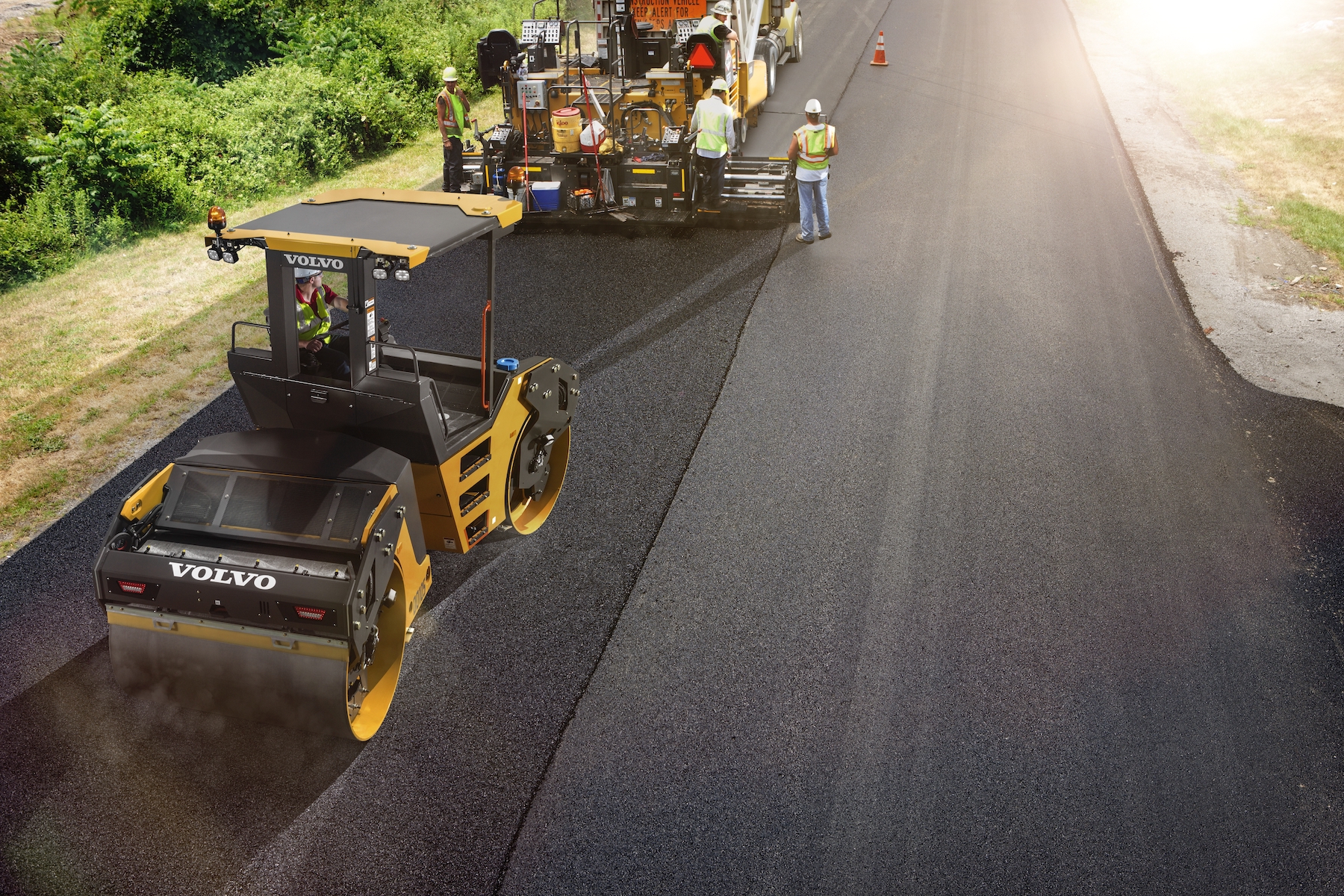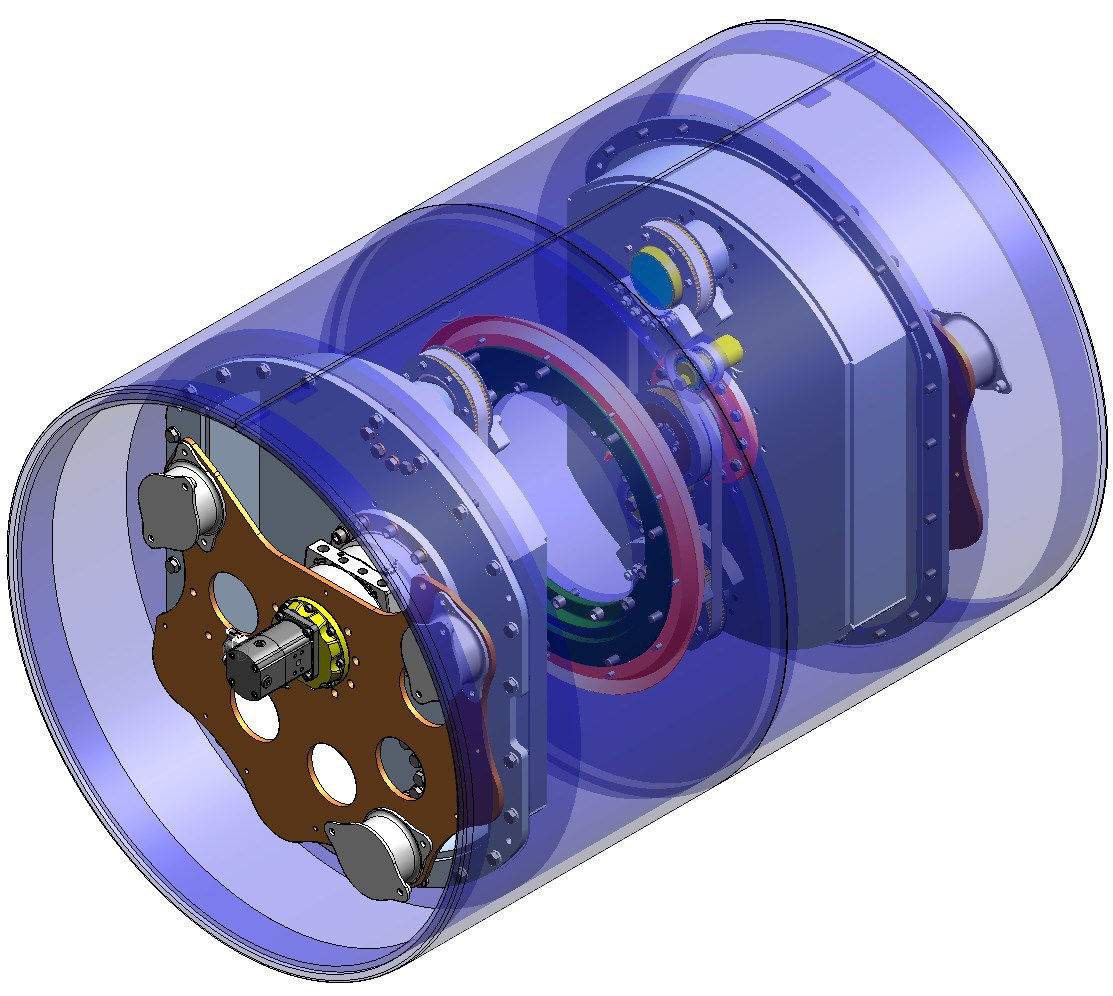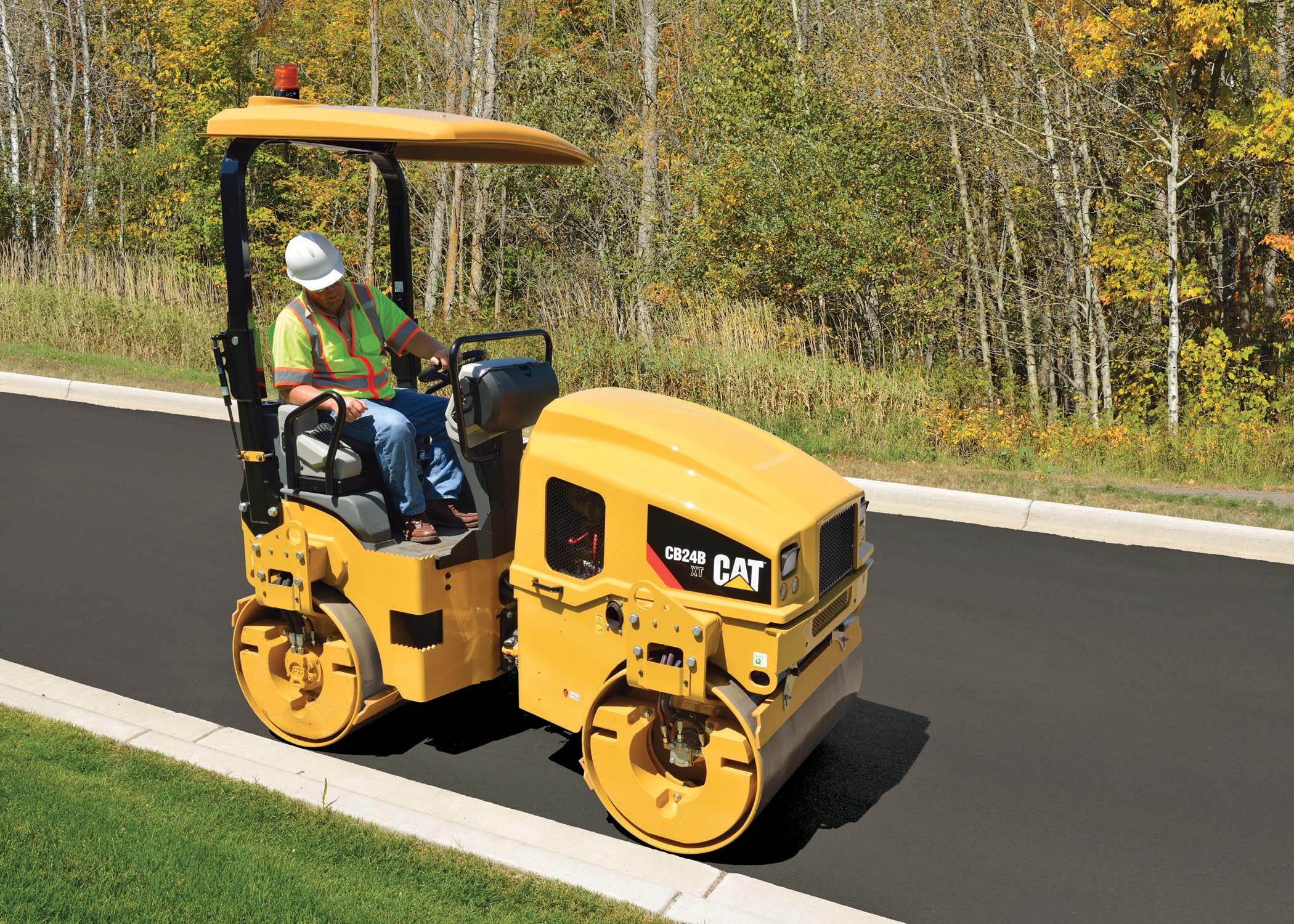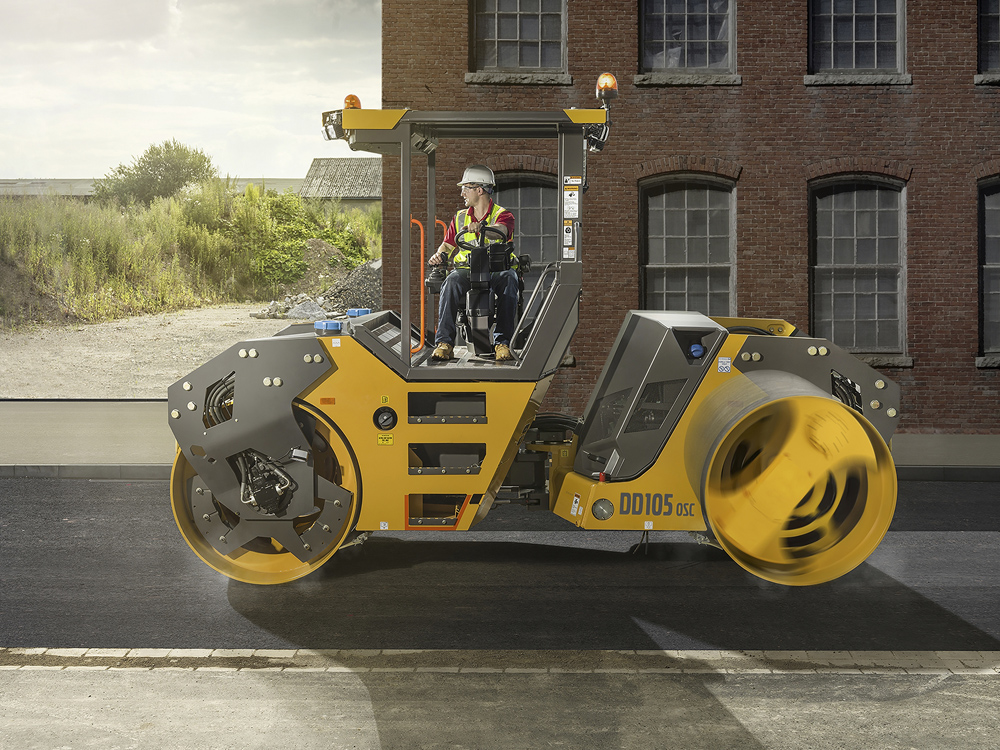
Compaction using oscillation has now been available for more than three decades - Mike Woof writes
There are several reasons why oscillation offers key advantages for compaction over the conventional methods. Oscillation works by using exciters to move the drum back and forward, rather than directing forces downwards as with a conventional drum. This effect is achieved by having twin, coupled out of balance exciters synchronised to rotate at the same speed and in opposite directions. The out of balance weights act in unison twice for every revolution, generating the forward and backward motion.
The direction of the forces is a key issue for oscillation as the compaction forces act tangentially and generate shear forces. These in effect separate the surface of the mat, with the drum remaining in contact with the surface and delivering both dynamic as well as static loads to squeeze out any voids. Because of this, the compaction forces are only felt where exerted and generate only 15% of the vibration of a conventional machine, a crucial advantage. Wear and tear of the compactor is also reduced using an oscillating type, while these machines are also quieter when working and are less fatiguing for the operators.
By comparison when using conventional vibration techniques, the out of balance weights achieve an up and down motion for the drum and the forces are directed downwards. These forces can be reflected off underlying layers, travelling some distance through the ground. In urban areas this can be of concern as it may affect surface structures of all types in the vicinity and can be of particular concern for historic buildings. Such transmitted vibration may also cause damage to underground utilities or adversely affect nearby computer equipment
Both soil and asphalt compactors are available with oscillating type drums and the ability to minimise transmitted vibration and the associated damage that can go with it is crucial for both sectors. However, arguably, it is for asphalt applications that the technology is of particular benefit.
Using oscillation allows dynamic compaction to be carried out immediately behind the asphalt paver, as the forces do not generate resonance patterns to any equipment nearby. Due to the kneading effect of the oscillation during compaction, these machines can even be used when the mat is at a lower temperature and without risking crushing the aggregates contained in the mix. The aggregates are redistributed within the mat, instead of being damaged and this avoids the risk of over-compaction.
As an oscillating compactor can be used directly behind the asphalt paver and continue in use even as the mat temperature drops, this allows wider temperature and time windows for compacting the surface. This also means oscillation is suited to applications where the mat may be subject to faster cooling rates, due to low ambient temperatures, high working altitudes or high wind chill factors. Oscillation is now being used commonly for compacting surfaces such as thin lifts (which tend to cool faster), a surface course technique favoured for the reduction it offers in expensive wearing course materials.
The oscillating compaction method can be used effectively for base, binder and wearing courses. The technique is of particular benefit for mixes that have high shear strengths. Oscillation suits use with SMA mixes or polymer modified bitumen (PMB) mixes that can be hard to compact. According to Hamm, this last is because the compaction forces are directed, promoting the redistribution of the long-chain binding agents. And oscillation is a useful method for compacting asphalt joints, where the hot material has to be compacted without risking damage to the cold adjoining mat. Joints that have been compacted using oscillation are said to last longer and be more waterproof.
Oscillation is widely favoured for compacting asphalt mats on new bridge decks or multi-storey parking areas as this avoids the issue of transmitted vibration associated with conventional compaction techniques. Using ordinary vibration systems for compaction on bridges or multi-storey car parks can be a cause for concern due to the potential for damage from vibration and issues with tertiary harmonic frequencies being generated in structural components.
Tandem rollers equipped with a conventional vibration drum and an oscillation drum can boost productivity, delivering the same compaction effect as a machine with vibration on both drums but requiring fewer passes to do so. This can mean either that fewer compactors may be needed to carry out a particular job or that the work can be completed more quickly.
By using oscillation, contractors can achieve good longitudinal evenness without risking surface rippling even when the machine is used at high working speeds. According to Hamm, the oscillating motion of the drum scrubs off bitumen from the top surface, ensuring a better skid resistance.
And although Hamm pioneered the technique, the introduction of competing oscillating compactors has broadened the market considerably. Ammann’s ARX 90 and ARX 110 offer oscillation, as do BOMAG’s BW 161 and BW 202 ADO TanGO machines, Caterpillar’s articulated CB10 and drum steer CD10, Sakai’s SW654ND and Volvo CE’s DD105 OSC. Of note is that these machines mostly weigh in and around the 10tonne class, although the performance specifications do vary.












